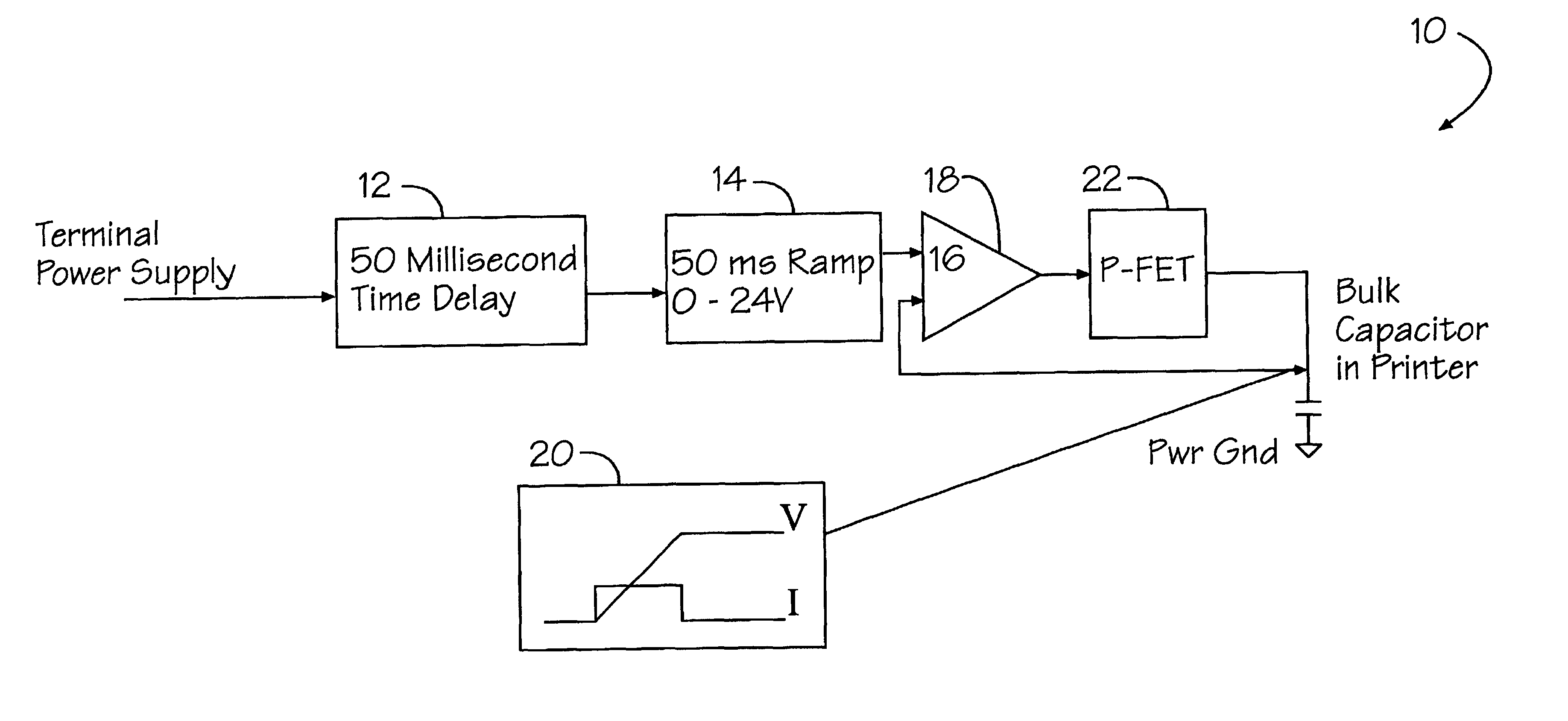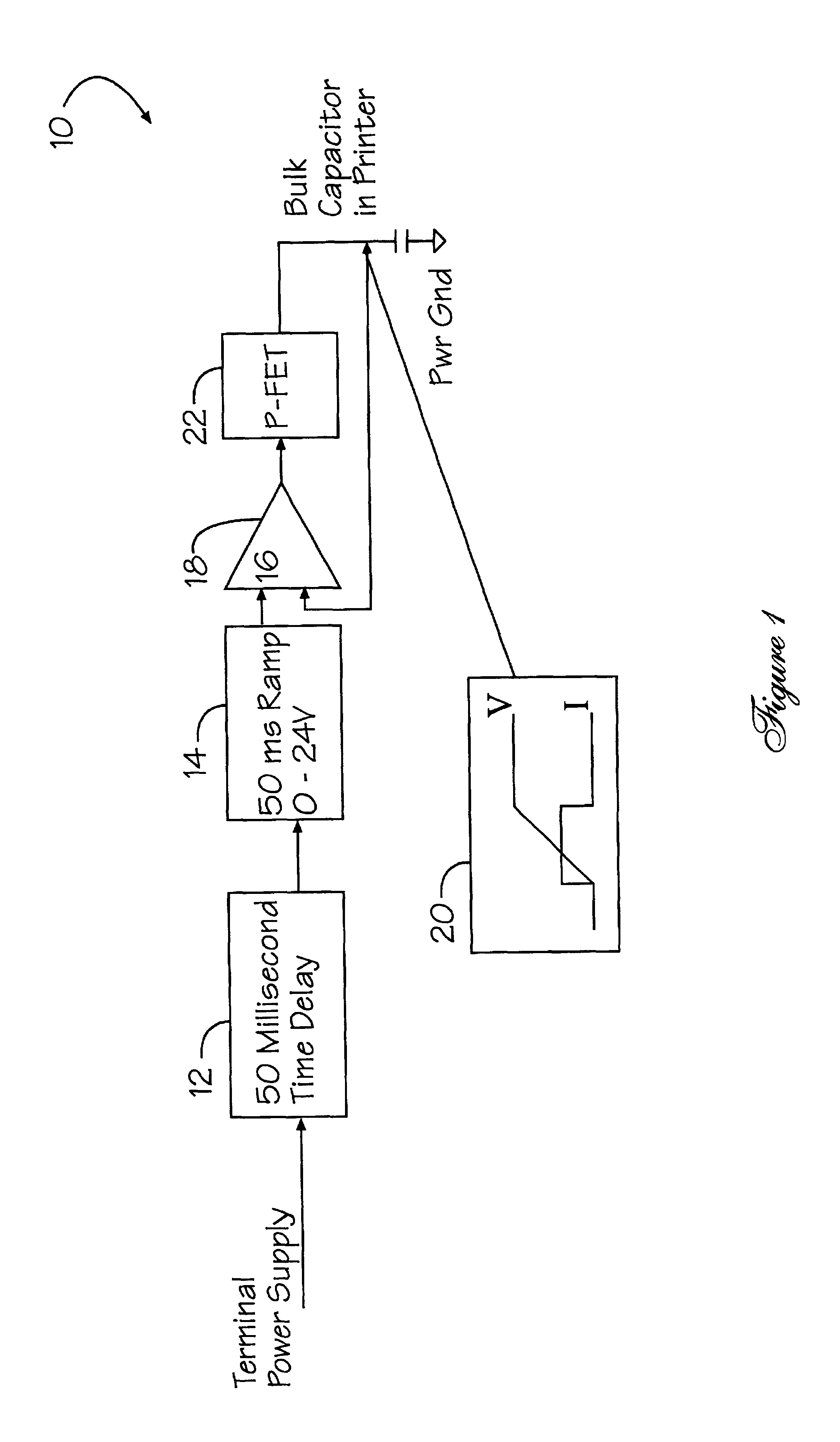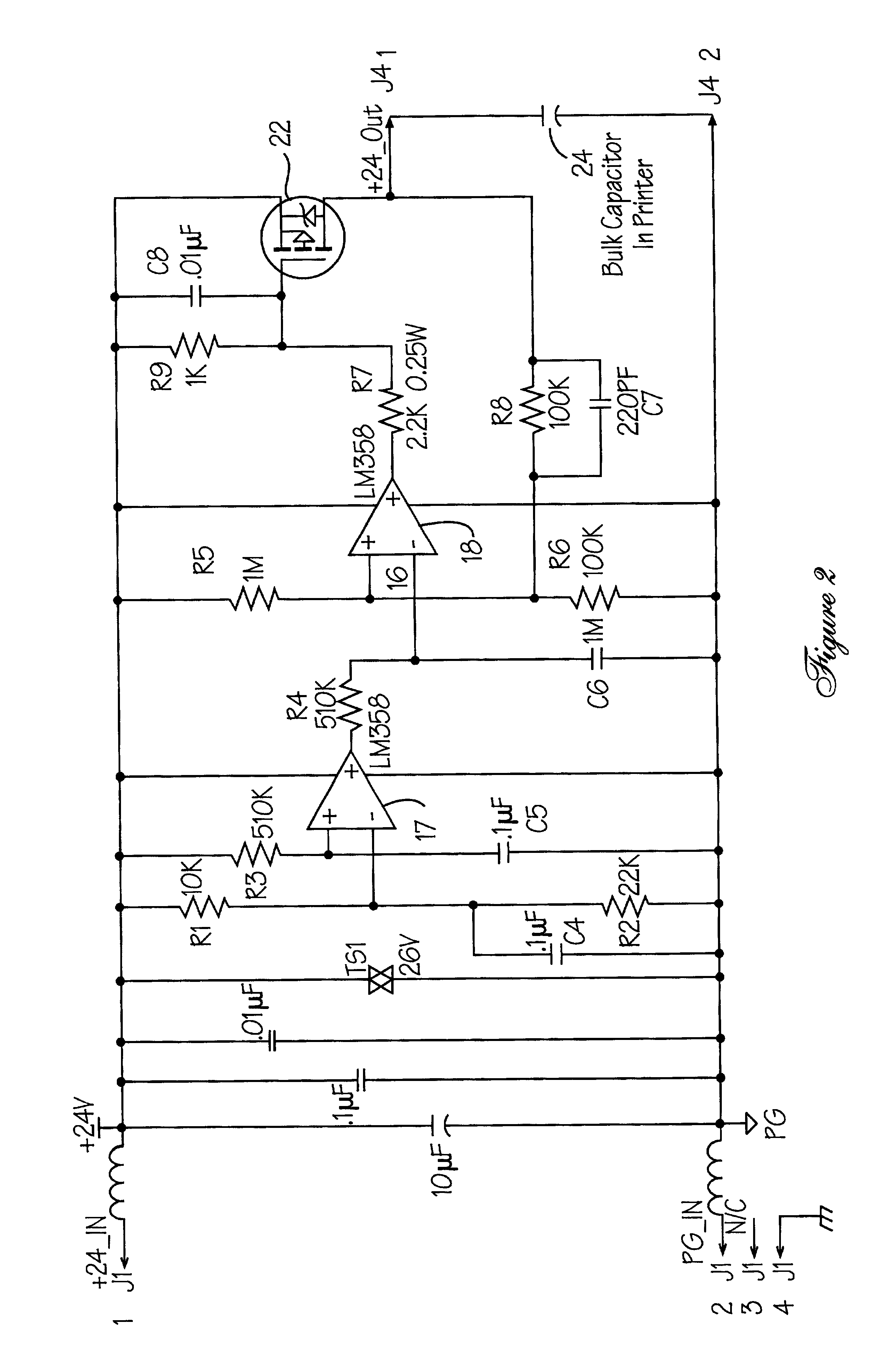Current inrush limiting circuit
- Summary
- Abstract
- Description
- Claims
- Application Information
AI Technical Summary
Benefits of technology
Problems solved by technology
Method used
Image
Examples
Embodiment Construction
[0017]Generally speaking, the invention features an inrush circuit for electronic devices and, in particular, an inrush circuit for point-of-sale printers. The circuit limits hot-plug or DC-side power switched inrush current into devices having high input capacitance. The circuit applies an active feedback-controlled voltage ramp to a bulk capacitor by means of a P-channel field effect transistor that is operated linearly after a controlled delay for contact bounce. Linear output voltage ramp to the load capacitor is ensured by providing active control of the gate voltage, via an operational amplifier with voltage feedback. The ramp is generated by an RC network, but only the first third of the exponential is used, wherein the waveshape is linear and approaches that of an ideal ramp. Since a voltage ramp applied to a capacitor implies constant current, the inrush current is controlled to the extent that the ramp is linear.
[0018]Now referring to FIG. 1, a block diagram of the inrush ...
PUM
 Login to View More
Login to View More Abstract
Description
Claims
Application Information
 Login to View More
Login to View More - R&D
- Intellectual Property
- Life Sciences
- Materials
- Tech Scout
- Unparalleled Data Quality
- Higher Quality Content
- 60% Fewer Hallucinations
Browse by: Latest US Patents, China's latest patents, Technical Efficacy Thesaurus, Application Domain, Technology Topic, Popular Technical Reports.
© 2025 PatSnap. All rights reserved.Legal|Privacy policy|Modern Slavery Act Transparency Statement|Sitemap|About US| Contact US: help@patsnap.com



